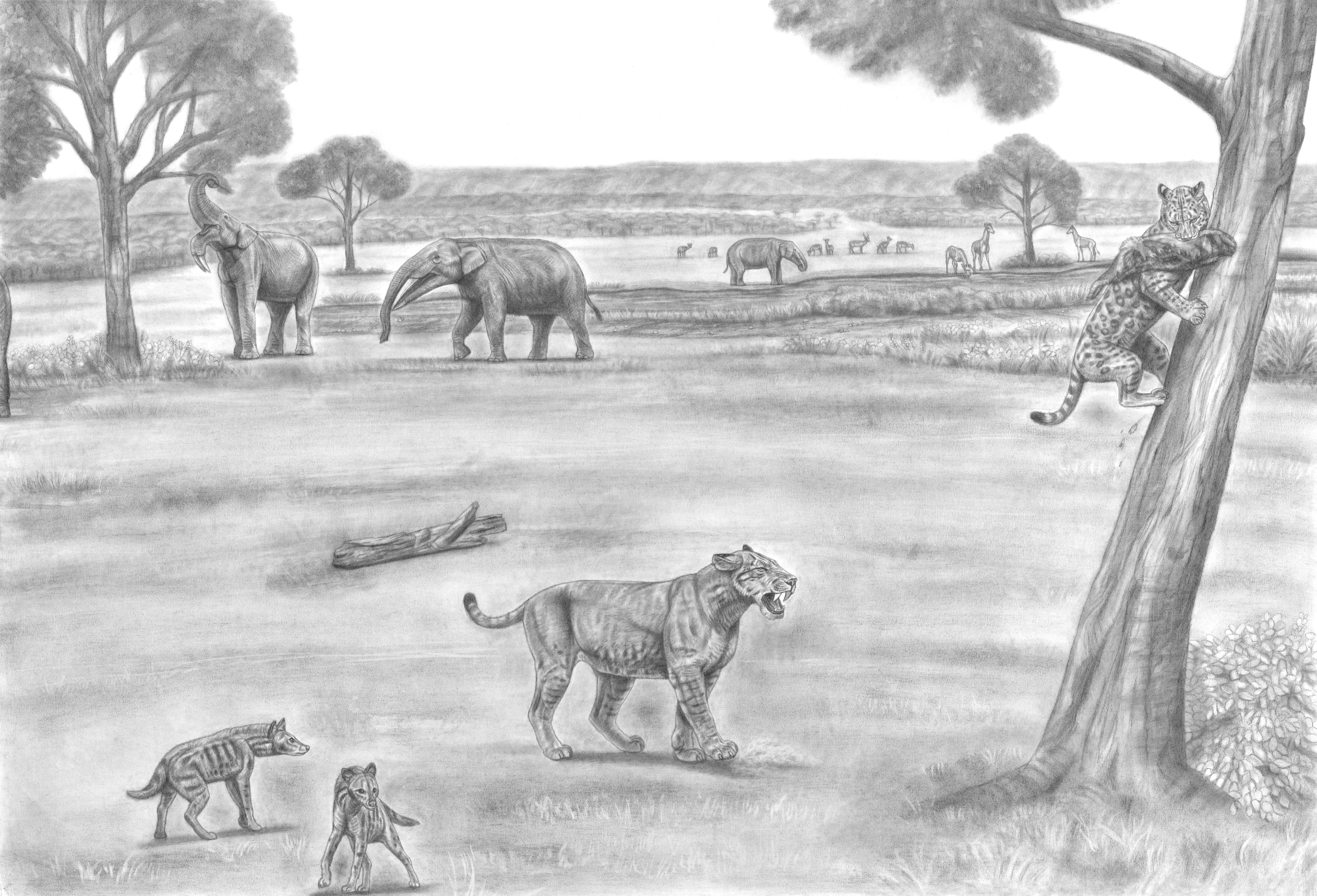Deviation Actions
Description
See please the larger image.
(This image is an accompanying piece to the previous Stegotetrabelodon scenery and my intention is to combine these two pictures to make a large, one continuous landscape. Would someone please be kind enough to help me on that attempt?)
The concept
One of characteristics of the Miocene fauna was the diversity of large carnivorous beasts that spanned from true carnivoras to creodonts to entelodonts and sparassodonts. The two dominant morpho-types among Miocene large carnivores were bone crackers(more specifically the ones with specialized teeth for both meat slashing and bone cracking) and saber-tooths(consisted solely of 'cats' with hypertrophied and flattened upper canines: nimravids, barbourofelids and true felids).
The sabertooth modification is largely considered as the most effective adaptation for quickly dispatching relatively large prey by specialized killing method of 'slashing bite' to the throat. The sabertooth already appeared in the Oligocene nimravids but it was in the Miocene that it became the major morpho group adding barbourofelids, felids and some sparassodonts to the list.
In the Miocene, interspecific predator competition and kleptoparasitism of kills appear to have been much more intense than in today. According to Christiansen(2008), such severe predatory competition may have acted as one of selective driving forces favouring sabertooth adaptation for rapid killing of prey(and thus speedy consumption as a result). This hypothesis I think also explains the presence of numerous large bone crackers and specialized scavengers(needless to say, most of them were also excellent hunters as well) thriving at the time.
We cannot discuss the Miocene carnivore guild without mentioning formidable bone crackers and sabertooths, the two major morpho-types at the time.
Species
(from front to back)
Ictitherium ebu
One of very slender, primitive hyenas that thrived throughout the Miocene. It was generally like an intermediate between the hyena and the civet but the limbs and the neck were proportionally more elongated than in extant hyenas. Some authors put Ictitherium as predominantly insectivores but I follow in this occasion, Werdelin's theory(1991) that it was more like the jackal and consumed meat and bone.
Amphimachairodus kabir
The genus Machairodus is now re-classified into earlier, smaller types(eg. Machairodus aphanistus) and later, more advanced ones(Amphimachairodus).
Amphimachairodus is considered to have been ancestral to the Pliocene Homotherium but some of cursorial modifications seen in later scimitar tooths were not yet so pronounced and its species were all very large with the tall statue and proportionally just as long body as in pantherine cats. The skull was narrow and very elongated, showed highly advanced machairodont traits in every way(including weaker bites). Especially large forms such as A. kabir, A. giganteus, A. kurteni were among the most fearful of sabertoothed predators.
Dinofelis barlowi
Dinofelis was the most representative genus of the tribe Metailutini and also the largest, approaching the size of very large pantanal jaguars. The limbs were built even stockier and more powerful than in the jaguar and they must have been excellent tree climbers as well.
Metailurine's upper canines were closer to solid conical tooth of felines both in shapes and the length, than to flattened saber tooth of other machairodonts. The skull also showed much less pronounced functional morphologies for wider gaping and accordingly, Dinofelis got the strong bite force comparable to those of pantherines. I presume therefore that Dinofelis, when needed, could've climbed the tree with prey in its mouth, as the leopard does!
Gomphotherium sp.
Deinotherium bozasi
Palaeotrugus germaini
Very large ancient giraffe that had less elongated neck, so the life appearance must have looked more like the okapi than true giraffes.
Aepyceros sp.
Impalas are among the oldest antelopes that emerged in Africa.
Image and Text : ⓒJagroar
I like the gomphotheres too, just along to a deinothere


































